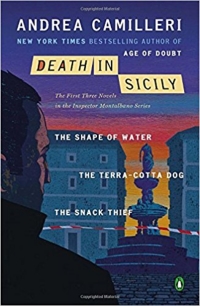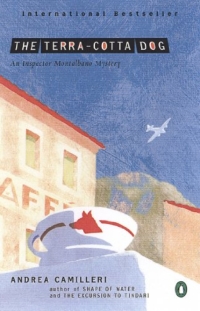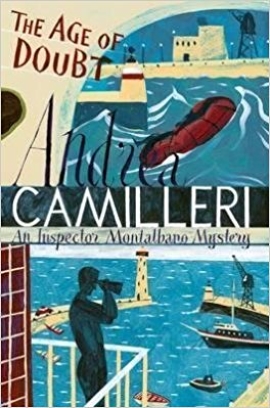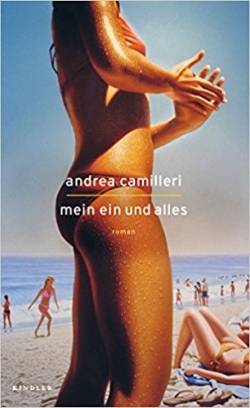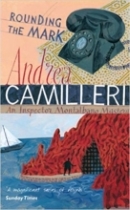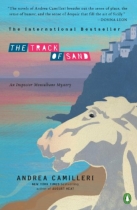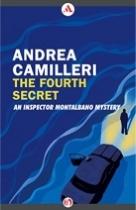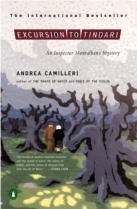|
'pity is
dead'
In the third novel of
the series, The Snack Thief (1996), Camilleri once again presents two seemingly
unrelated crimes, but which eventually mesh as if Fate is indeed determined by
some cosmic master plan. One, a Tunisian called Ahemed Moussa gets shot dead on
board a Sicilian fishing boat when challenged by a Tunisian patrol boat in
international waters, and two, a business man gets knifed in the elevator of an
apartment building somewhere in Vigàta.
The first incident
appears to be a coastguard affair but when Montalbano discovers the murdered
businessman had a Tunisian mistress... well, it's amazing how messy some lives
can be in sleepy old Vigàta. Yet here Camilleri delivers a message about
the tragedy of the African migration into Europe via the Italian islands of
Lampedusa and Sicily. And while he does present a liberal-humanist view of the
migration situation, there's nothing naive about the politics of it all, or an
easy condemnation. His hero Montalbano is sensitive to a point, but not to the
point where he can no longer do his job -- this comes later in the series, way
down the line, and even then, it's Nature, not politics, that grinds him
towards despair.
Some might think The
Snack Thief is a bit too Catholic and sentimental in its desire to show
Montalbano as a man of Christian charity but robbed of a normal family life due
to the exigencies of his job. As he and Livia have left it late in life to a),
get married, b), have children, their impulsive dalliance with adoption as a
solution to the impasse in their relationship helps salve any guilt or anxiety
while at the same time shows the reader that these are "good people" even if
their career-driven modernity has a faint odor of selfishness. In Montalbano's
case, his secular humanism is clearly a Catholic refit, although his sympathy
for "the snack thief" -- the Tunisian orphan boy -- might be a recognition of
his own orphan childhood.
So it goes. Like a
priest who cannot marry because he is already married to the Church, Montalbano
is fully committed to the Police. It's a familiar condition for the cop in the
contemporary crime novel; Simenon's Inspector Maigret might be able to have a
wife and a bourgeois hearth, but for nearly everyone else such comforts are
more or less impossible. Arrivederci, the Golden Age... those days are
gone, signor. Mankell's Wallander is a mess, widowed and alienated, and
Leighton Gage's Delegado Silva is living with an alcoholic, is already a
widower without the freedom. Others come to mind: the famous Inspector Morse of
Oxford, Investigator Arkady Renko of the Moscow Crime Bureau, Harry Bosch of
the L.A.P.D. Homicide Squad... the list is seemingly endless. And they all have
the same illness, the same disconnect. The solution of the crime brings no
closure, except in the bureaucrat's case book.
As a character, Salvo
Montalbano is an Everyman. He's probably how a lot of Italian males like to see
themselves, fair but tough, a loner in a rotten world which has just enough
beauty and humanity in the fabric to allow him to keep going, follow the moral
compass even if the compass sometimes has to be jigged. Indeed, Montalbano
appeals to all of us as he's funny and beastly, strong and (once in a while)
weak, jealous and liberal, totally human without succumbing to greed, vanity,
cruelty or the false persona of the double-man. Yet he lies, evades,
masticates... as he is essentially an oral man. Cigarettes, alcohol, food...
food and more food... and beauty, always beauty. Women play him, as they can
read him like a mother. He's everyone's son, and everyone's father, simply
because he has no children, is available when the call of duty
requires.
6 Characters in
Search of a Killer
The Vigàta
police team is small, the number uncertain, although the main players appear to
be six: Montalbano (Chief Inspector), Mimi Augello (Assistant Inspector and
modest lothario), Fazio (fastidious Sergeant), Catarella (Falstaffian desk
constable), Tortorella (patrolman), X (changeable, novel to novel... Galluzzo,
Gallo, et. al).
'He (Mimi Augello)
looked like an illustration from an nineteenth century acting manual, under the
heading "Dismay"'.
Certainly, Camilleri
should be able to create a believable cast for Montalbano's team, if not only
from reading other police procedurals, but from his own experience as a stage
director and TV drama producer. The Vigàta team operates like a theatre
ensemble, complete with a hero, a lothario, a buffoon and a couple of spear
carriers. The females are always exterious, outside the unit, but come
with the plot, like spirits sent to subvert the masculine imperative.
So there's a lot of
theatre in the Montalbano series -- stock routines such as running into doors,
collisions, prat falls and the like where buffoonery acts as comic relief to
the on-going tragedy. The subject may be murder Sicilian style, but withal the
world goes on with its absurdities (politics), small pleasures (eating)...
work, play and dreaming. In fact, several Montalbano novels start with the
detective dreaming just as the dawn comes up, as if the dream sets up the
agenda for the day. Again, this is a drama convention, familiar to aficionados
of Shakespeare, Strindberg, Ibsen, Hauptmann, Pirandello... and surrealism. In
Journey to Tindari (2000), Camilleri has Montalbano shift his contemplation
temple from the shadow of a lighthouse to the thicket below an ancient Saracen
(olive) tree... the image an acknowledged lift from Pirandello's incomplete
novel, The Giants of the Mountain. Here Montalbano retires from work stress,
lies below the serpentine branches, sleeps, dreams, awakes to find himself
smothered in ants. The mise en scene tilts towards surrealism, as many
of Salvador Dali's paintings include figures swarming with ants in a biomorphic
translation of life and death.
|
